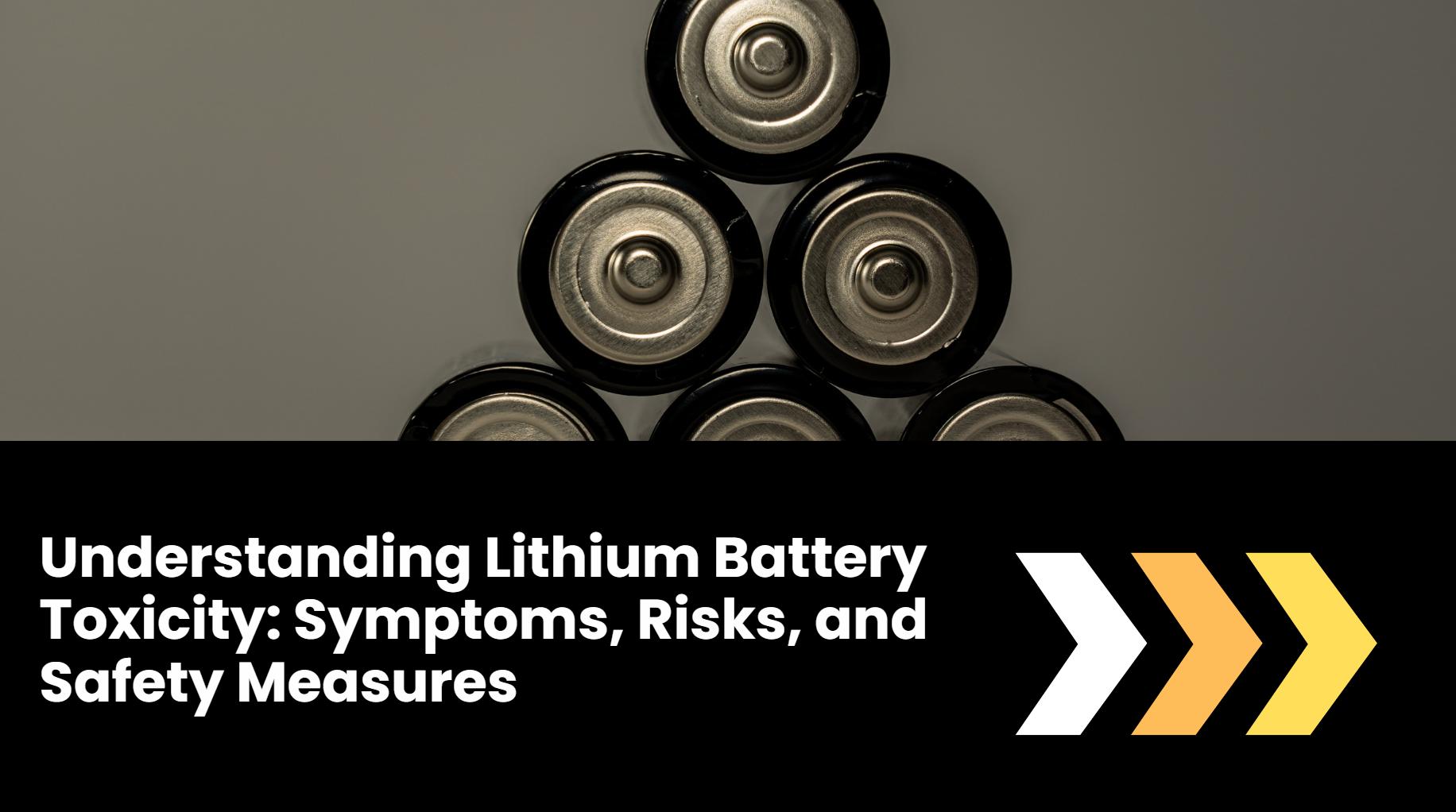Lithium batteries, widely celebrated for their high energy density and longevity, are integral to modern technology and the shift towards sustainable energy solutions. However, with their increasing prevalence comes the need to address the potential health risks associated with lithium battery toxicity. Understanding these risks is crucial for ensuring both safe usage and effective response in the event of exposure.
Mild Symptoms of Lithium Battery Toxicity
The initial signs of lithium battery toxicity can be subtle but should not be overlooked. When serum lithium concentration ranges between 1.5 to 2.5 mEq/L, individuals may experience a spectrum of mild symptoms. These include:
- Nausea and Vomiting: These are often the first indicators of lithium exposure. Persistent nausea and occasional vomiting may signal the onset of toxicity.
- Lethargy: A feeling of profound tiredness or lack of energy can be a result of elevated lithium levels.
- Tremor: Fine tremors or shaking, particularly in the hands, are common in early stages of lithium toxicity.
- Fatigue: Persistent exhaustion that does not improve with rest can also indicate lithium exposure.
Moderate Intoxication Symptoms
As lithium levels rise and reach a serum concentration of 2.5 to 3.5 mEq/L, the symptoms become more pronounced and severe. Moderate intoxication can present with:
- Confusion and Agitation: Individuals may exhibit signs of mental disorientation, difficulty concentrating, or heightened restlessness.
- Delirium: A more severe state of confusion characterized by disorganized thinking, hallucinations, and impaired perception.
- Tachycardia: An increased heart rate, which can lead to palpitations and other cardiovascular symptoms.
- Hypertonia: Increased muscle tone, leading to rigidity or stiffness, which can affect motor control and movement.
Severe Lithium Toxicity: Critical Symptoms and Emergency Response
In cases where serum lithium concentrations exceed 3.5 mEq/L, the symptoms become critical and require immediate medical intervention. Severe lithium toxicity may manifest as:
- Severe Neurological Symptoms: Including seizures, significant mental confusion, or severe tremors.
- Renal Failure: Impaired kidney function which can exacerbate the toxicity.
- Cardiac Complications: Severe arrhythmias or other critical heart conditions.
- Coma: In extreme cases, loss of consciousness or coma may occur.
Environmental and Health Implications of Lithium Battery Production
The production and disposal of lithium batteries pose environmental and health risks beyond immediate toxicity. Responsible management practices are essential for minimizing these risks. Key considerations include:
- Environmental Impact: The extraction of lithium and other raw materials can lead to habitat destruction and water contamination. Effective waste management and recycling processes are crucial to mitigate these effects.
- Health Risks to Workers: Individuals involved in the production process may be exposed to hazardous materials and conditions. Implementing stringent safety protocols and protective measures is essential to safeguard workers.
- Sustainable Technologies: Investing in alternative, less hazardous materials and recycling technologies can help reduce the environmental footprint of lithium battery production.
Best Practices for Safe Handling and Disposal
To mitigate the risks associated with lithium batteries, adherence to best practices in handling and disposal is imperative:
- Proper Storage: Store lithium batteries in cool, dry environments to prevent overheating and potential leakage.
- Safe Disposal: Follow local regulations for battery disposal and recycling to prevent environmental contamination.
- Emergency Preparedness: Equip facilities and individuals with knowledge of emergency procedures for dealing with battery leaks or spills.
Collaborative Efforts for a Greener Future
Addressing the challenges of lithium battery toxicity requires a collaborative approach involving governments, industry leaders, and communities. By working together, we can:
- Enhance Regulations: Develop and enforce stricter guidelines for the production, handling, and disposal of lithium batteries.
- Invest in Research: Support ongoing research into safer battery technologies and sustainable practices.
- Promote Education: Increase awareness about the risks and proper management of lithium batteries to ensure safe usage and response.
Conclusion
As the world continues to embrace lithium batteries as a cornerstone of clean energy, it is crucial to address the health and environmental challenges associated with their use. By understanding the symptoms of lithium toxicity, implementing robust safety measures, and fostering collaboration, we can harness the benefits of lithium batteries while minimizing their risks. This approach not only ensures a safer transition to greener technologies but also protects human health and the environment for future generations.




